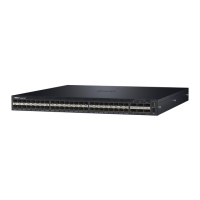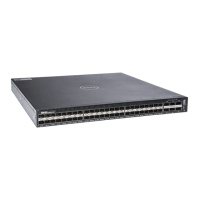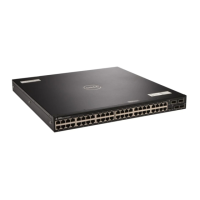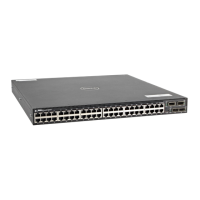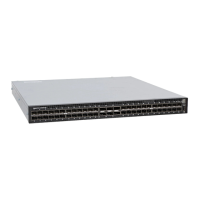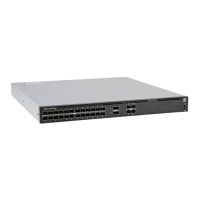The interface range command allows you to create an interface range allowing other commands to be
applied to that range of interfaces.
The interface range prompt offers the interface (with slot and port information) for valid interfaces. The
maximum size of an interface range prompt is 32. If the prompt size exceeds this maximum, it displays (...) at
the end of the output.
NOTE: Non-existing interfaces are excluded from the interface range prompt.
NOTE: When creating an interface range, interfaces appear in the order they were entered and are not
sorted.
The show range command is available under Interface Range mode. This command allows you to display all
interfaces that have been validated under the interface range context.
The show configuration command is also available under Interface Range mode. This command allows
you to display the running configuration only for interfaces that are part of interface range.
You can avoid specifying spaces between the range of interfaces, separated by commas, that you configure
by using the interface range command. For example, if you enter a list of interface ranges, such as
interface range fo 2/50-2/53,te 1/1, this configuration is considered valid. The comma-separated
list is not required to be separated by spaces in between the ranges. You can associate multicast MAC or
hardware addresses to an interface range and VLANs by using the mac-address-table static
multicast-mac-address vlan vlan-id output-range interface command.
Bulk Configuration Examples
Use the interface range command for bulk configuration.
• Create a Single-Range
• Create a Multiple-Range
• Exclude Duplicate Entries
• Exclude a Smaller Port Range
• Overlap Port Ranges
• Commas
• Add Ranges
Create a Single-Range
The following is an example of a single range.
Example of the interface range Command (Single Range)
Dell(config)# interface range tengigabitethernet 1/1 - 1/23
Dell(config-if-range-te-1/1-1/23)# no shutdown
Dell(config-if-range-te-1/1-1/23)#
Interfaces 474
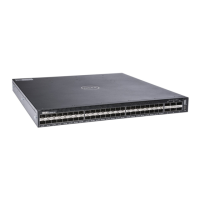
